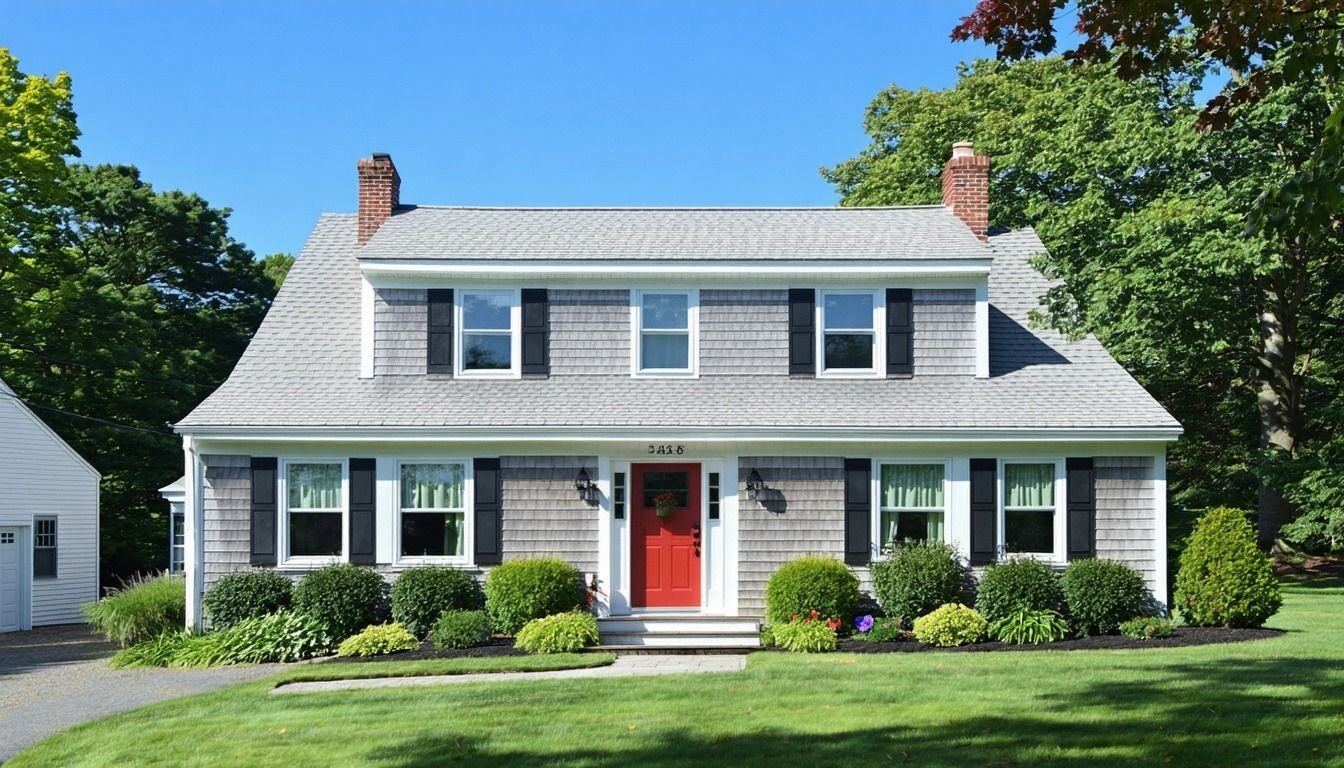3 Common Insulation Problems with Cape Cod Houses


While a Cape Cod house may look like something out of a cozy seaside postcard, it's no secret that this classic architectural style tends to underperform when it comes to energy efficiency, especially in the attic.
Built to face ocean breezes, these homes were never designed with modern comfort in mind. While charming, the traditional Cape Cod house is notorious for insulation problems that lead to temperature inconsistencies, drafty rooms, and high energy bills.
At RetroFoam of Michigan, we've been insulating homes for more than 20 years -- and a good number of them have been Cape Cod-style houses. With all that experience, we know exactly what to look for and how to address the most common insulation challenges.
In this article, we'll break down Cape Cod house characteristics, the unique insulation issues these homes face, and how to effectively tackle them, especially if you're wondering how to insulate a Cape Cod attic the right way.
What is a Cape Cod House?
A Cape Cod house is a one- or one-and-a-half-story home with a steeply pitched gabled roof, minimal ornamentation, and a cozy, symmetrical design, according to Old Houses for Sale.
This iconic style originated in 17th-century New England and saw a major revival between the 1930s and 1950s.
Despite its charming exterior, the internal design of a Cape Cod-style home can make proper insulation a challenge.
Common Cape Cod House Characteristics
- Symmetrical front with a centered entry door
- Steep roof with side gables and minimal overhang
- One of 1 1/2 stories
- Gabled dormers and multi-paned, double-hung windows
- Shutters and simple exterior detailing
- Central or gable-end chimney
- Wood frame construction with lap, shake, or shingle siding
These architectural details contribute to the unique challenges of Cape Cod insulation, especially in the attic and knee wall areas.
Common Cape Cod Attic Insulation Problems
The resurgence of Cape Cod homes during the Great Depression meant insulation wasn't a priority -- fuel was cheap, and energy efficiency wasn't top of mind.
Unfortunately, those decisions continue to affect homeowners today.
Here are the top insulation problems found in Cape Cod houses.
1. Lack of Original Insulation
Most Cape Cod homes built between the 1920s and 1950s were constructed without insulation.
Back then, heating costs were low, so homeowners didn't see the value in spending more to insulate.
2. Inconsistent Heating Distribution
Some Cape Cod-style homes don't have ductwork or piping for heat on the second floor at all.
Worse yet, in many cases, hot water pipes are routed through exterior walls or behind knee walls -- areas that often aren't insulated -- leading to major heat loss.
3. Drafty Knee Wall Spaces
Ah, the knee wall.
It's a short wall (typically under 3 feet) that supports the roof rafters in the upper floor. The problem isn't the wall -- it's the uninsulated space behind it.
These areas are often forgotten, allowing air to leak in and out, which impacts both comfort and energy costs.
How to Insulate a Cape Cod Attic the Right Way
The good news? Adding proper insulation to your Cape Cod house can make a huge difference in comfort, efficiency, and monthly energy bills.
Air sealing the home is one of the best options for this style of home. And the best way to achieve a full air seal is with foam insulation.
Here's how to fix those key issues.
- Insulate the Knee Wall Spaces: This is often the most overlooked but most impactful area in a Cape Cod attic insulation project. Even if the rest of the home has decent insulation, an unsealed knee wall space can ruin its effectiveness.
- Seal the Entire Building Envelope: From the rim joist to the roof deck, using spray foam and injection foam insulation creates a continuous thermal barrier that keeps outside air where it belongs.
- Address Heating Distribution Gaps: Once insulation is in place, homeowners can look into upgrading or extending their HVAC system to ensure better airflow on the upper floors.
By combining proper insulation with strategic air sealing, your Cape Cod house can be just as energy efficient as it is charming.
If you're ready to make your Cape Cod-style house more comfortable and efficient, we're here to help. Fill out the form on our website to request a free consultation, or if you'd like to learn more about foam insulation, check out our Learning Center.
Key Points:
- Cape Cod homes often have little to no insulation due to the era they were built.
- Common issues include drafty knee walls, poorly distributed heat, and energy loss.
- Foam insulation -- particularly spray and injection foam -- can solve these problems by creating a full air seal.
- Proper Cape Cod attic insulation dramatically improves home comfort and energy efficiency.
- Target the knee wall spaces and uninsulated cavities to get the most out of your insulation upgrade.
Related Articles
Open Cell or Closed Cell Spray Foam: Which is Best for the Attic and Roof?
How to Add Cape Cod Attic Insulation: Spray Foam the Knee Wall or Roof Deck
About Amanda Emery
Amanda previously has worked as a breaking news and crime reporter, TV news producer, and editor in Flint and Detroit. Throughout her career as a journalist, she has won several awards from The Society of Professional Journalists - Detroit Chapter and the Michigan Press Association. As part of the RetroFoam of Michigan family, Amanda uses her experience as a journalist to write content that will help educate homeowners on the benefits of foam insulation. When Amanda isn’t writing, she’s spending time with her husband and rescued huskies. She also loves knitting, making art, cooking, and hosting dinner and a movie night for friends and family.


